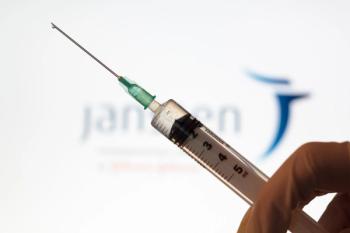
Pharmacy Practice in Focus: Oncology
- February 2020
- Volume 2
- Issue 1
New Combination Therapies for the Treatment of Chronic Lymphocytic Leukemia
Patients with CLL may have genetic mutations that predict response to different treatments.
CHRONIC LYMPHOCYTIC LEUKEMIA (CLL) is the most common type of leukemia in adults and accounts for approximately 37% of new leukemia cases. An estimated 20,720 new cases of and 3930 deaths from CLL will occur in the United States in 2019.1 The median age at diagnosis of CLL is 72 years.1
Pathologically, CLL is a disease of neoplastic mature B cells within the blood, marrow, lymph nodes, and spleen.2 It is a chronic condition with survival often measured in years, and many patients can be observed over time before requiring treatment. Indications for treatment of CLL include significant disease-related symptoms (fatigue, night sweats, fevers, or weight loss), end-organ dysfunction, progressive disease in the lymph nodes or spleen, and progressive anemia or thrombocytopenia.3 Patients are generally categorized into 2 groups: those who are younger (<65 years of age), without comorbidities, and able to tolerate more intense treatment or those who are older and/or have significant comorbidities.
Patients with CLL may have genetic mutations that predict response to different treatments. Therapy choices are based on whether a patient has a TP53 mutation, del(17p), or an IGHV mutation. Patients whose leukemic cells have TP53 mutations or del(17p) have a generally worse prognosis and are less likely to respond to traditional chemotherapy with alkylating agents or purine analogs.4 Conversely, IGHV mutations (>2% mutated) are associated with favorable prognosis and response to chemoimmunotherapy.5
Over the past few decades, the treatment paradigm for CLL has changed dramatically. Historically, chemoimmunotherapy with alkylating agents and purine analogs comprised the backbone of treatment. In recent years, targeted oral agents such as ibrutinib (Imbruvica) and venetoclax (Venclexta) have been shown to improve outcomes in almost all populations of CLL patients. Currently, 2 preferred first line treatment regimens for all patients with CLL are ibrutinib or venetoclax plus obinutuzumab (Gazyva) (Table).3
A number of chemoimmunotherapy regimens, which combine traditional chemotherapy (ie, fludarabine [Fludara]) with medications intended to stimulate the immune system to eliminate malignant cells (ie, rituximab), are still recommended in the first-line setting; however, the preferred regimens generally include either ibrutinib or venetoclax. These new therapies have consistently improved progression-free survival (PFS) compared with traditional chemoimmunotherapy regimens and have also improved overall survival (OS) in some cases.6,7 In addition, targeted therapies are often better tolerated than chemoimmunotherapy, making them feasible options for older patients or those with comorbidities.
Ibrutinib
Ibrutinib is an oral irreversible inhibitor of Bruton tyrosine kinase (BTK), a kinase involved in the B-cell receptor (BCR) signaling pathway (Figure 1).8 Inhibiting the BCR pathway prevents malignant B-cell proliferation, survival, and migration. Ibrutinib is therefore used in a variety of B-cell malignancies, including CLL, mantle cell lymphoma, and marginal zone lymphoma. In 2014, ibrutinib was approved for patients with CLL who had received at least 1 prior therapy. Over the past few years, it has been compared with and found superior to chemoimmunotherapy regimens. The Alliance North American Intergroup Study (A041202) ( NCT01886872), E1912 (NCT02048813), and iLLUMINATE (̌NCT02264574) trials support ibrutinib’s current placement as a preferred first-line treatment for all patients with CLL.
The A041202 was a 3-arm, randomized, phase 3 trial in patients 65 years or older with previously untreated CLL.9 Patients were randomized 1:1:1 to bendamustine (Treanda) plus rituximab (Truxima) (BR), ibrutinib plus rituximab, or ibrutinib alone. This trial aimed to determine whether treatment with ibrutinib (with or without rituximab) was superior to BR, as well as whether adding rituximab to ibrutinib increased efficacy. The estimated percentage of patients with PFS at 2 years was 74% (95% CI, 66-80) with BR, 87% (95% CI, 81-92) with ibrutinib alone, and 88% (95% CI, 81-92) with ibrutinib plus rituximab. The hazard ratios (HRs) for progression or death were 0.39 (95% CI, 0.26-0.58) for the comparison of ibrutinib to BR and 0.38 (95% CI, 0.25-0.59) for the comparison of ibrutinib plus rituximab to BR. There was no difference in PFS between the ibrutinib and ibrutinib plus rituximab arms (HR 1.00; 95% CI, 0.62-1.62, 1-sided P = .49). There were also no significant differences found in OS for any group comparisons. At 2 years, the estimated percentage of patients alive was 95% (95% CI, 91%-98%) for BR, 90% (95% CI, 85%-94%) for ibrutinib, and 94% (95% CI, 89%-97%) for ibrutinib plus rituximab. Grade 3 or higher hematologic adverse effects (AEs) were higher in the BR arm, and grade 3 or higher nonhematologic AEs were higher in the ibrutinib-containing arms.
In the E1912 trial, patients 70 years or younger with previously untreated CLL were randomized to either ibrutinib plus rituximab (for 6 cycles, followed by ibrutinib alone) or chemoimmunotherapy with fludarabine, cyclophosphamide, and rituximab (FCR).7 The ibrutinib- rituximab arm was associated with both improved PFS and OS. PFS at 3 years was 89.4% (95% CI, 86-93) in the ibrutinib-rituximab group and 72.9% (95% CI, 65.3-81.3) in the FCR group. OS at 3 years was 98.8% (95% CI 97.6-100) in the ibrutinib-rituximab group and 91.5% (95% CI, 86.2-97) in the FCR group. Based on the results of this trial, ibrutinib monotherapy was given a category 1 National Comprehensive Cancer Network (NCCN) recommendation for patients aged less than 65 years with IGHV-unmutated CLL and without del(17p) or TP53 mutation.3 However, the subgroup of patients with IGHV-mutated CLL did not experience increased PFS with ibrutinib-rituximab compared with FCR. Therefore, patients with IGHV-mutated CLL who are aged less than 65 years and without significant comorbidities may benefit more from FCR over targeted agents as first-line therapy.
The iLLUMINATE trial provided another comparison between chemoimmunotherapy and ibrutinib plus immunotherapy.10 This study randomized previously untreated CLL patients 65 years and older, as well as younger patients with comorbidities, to either ibrutinib plus obinutuzumab or chlorambucil plus obinutuzumab. The median follow-up was 31.3 months, and at the time of analysis, PFS was 79% in the ibrutinib group and 36% in the chlorambucil group. Median PFS was significantly longer in the ibrutinib group than in the chlorambucil group (not reached [95% CI, 33.6 mo to nonestimable] versus 19 months [95% CI, 15.1-22.1]). Ibrutinib-obinutuzumab demonstrated PFS benefits in the high-risk population as well (those with unmutated IGHV, del17p, del11q, or TP53 mutations). Median OS was not reached in either group, and was similar at 30 months (86% in the ibrutinib group and 85% in the chlorambucil group; HR 0.92 [95% CI, 0.48-1.77]).
One potential drawback to ibrutinib therapy is its indefinite duration compared with traditional chemoimmunotherapy regimens, which are given for a defined number of treatment cycles. Ibrutinib is well tolerated in many patients but may cause serious AEs. The most common serious AEs of ibrutinib include cytopenias and their complications, cardiac arrhythmias, hypertension, second primary malignancies, and tumor lysis syndrome. Single agent ibrutinib is associated with grade 3 and 4 neutropenia (23%), thrombocytopenia (8%), and anemia (3%).11 Grade 3 or higher atrial fibrillation or flutter has been reported in 4% of patients, and 0.2% have experienced ventricular tachyarrhythmias. Hypertension (grade 3 or higher) occurs in 5% of patients on ibrutinib. Pharmacists play an important role in monitoring patients’ labs and helping them manage the AEs associated with ibrutinib. In addition, pharmacists can monitor for drug interactions associated with ibrutinib, which is metabolized by CYP3A4 and interacts with both CYP3A4 inducers and inhibitors. Antiplatelet medications also interact with ibrutinib.
Venetoclax
Venetoclax is a small molecule inhibitor of B-cell lymphoma-2 protein (BCL-2), an antiapoptotic protein overexpressed in B-cell malignancies including CLL (Figure 2).12 Venetoclax displaces apoptotic proteins BIM from BCL-2, which typically suppress cell death mediators BAX/BAK. The repression of BAX/BAK allows the leukemic cells to undergo apoptosis. Venetoclax was originally approved by the FDA in 2016 for patients with del(17p) CLL who had received at least 1 line of therapy.13 In 2018, the FDA approved venetoclax plus rituximab for patients with relapsed or refractory CLL. The approval was based on the MURANO trial, which demonstrated superior PFS with venetoclax plus rituximab compared with BR.14 Since these initial approvals, venetoclax has been studied in different combinations and treatment settings within CLL and other B-cell malignancies.
Venetoclax and Obinutuzumab
The most recent FDA approval for venetoclax came following the phase 3 CLL14 trial comparing venetoclax plus obinutuzumab to chlorambucil plus obinutuzumab in previously untreated patients with CLL who also had coexisting conditions.6 The CLL14 trial randomized 432 patients (1:1) to receive chlorambucil or venetoclax for 12 cycles with obinutuzumab given for the first 6 cycles.
The primary end point of the study was investigatorassessed PFS. At data cutoff, more primary end point events had occurred in the chlorambucil group than the venetoclax group (77 vs 30 events; HR for progression or death = 0.35; 95% CI, 0.23-0.53; P<.001). The estimated 24-month survival rate was also higher for venetoclax (88.2%) versus chlorambucil (64.1%; HR = 0.35; 95% CI, 0.23-0.53; P<.001). Results were consistent across high-risk patient groups with TP53 deletion or mutation and unmutated IGHV. AEs were observed at similar rates between treatment arms; the most common grade 3 or 4 AE was neutropenia (52.8% with venetoclax and 48.1% with chlorambucil). Grade 3 or 4 febrile neutropenia and infections were reported in 5.2% and 17.5% of patients receiving venetoclax and in 3.7% and 15% of patients administered chlorambucil. Tumor lysis syndrome (TLS) was reported in only 3 patients in the venetoclax-obinutuzumab, and all 3 cases occurred during initial obinutuzumab infusions prior to beginning treatment with venetoclax).
The NCCN has incorporated venetoclax plus obinutuzumab into treatment guidelines as a preferred firstline treatment for patients with or without del(17p) or TP53 mutation positive CLL.3 An advantage with venetoclax compared with ibrutinib is the defined treatment course. Pharmacists can play a role in the management of venetoclax by identifying drug interactions, as it is a CYP3A4 substrate. Also, pharmacists can aid in identifying patients at risk for TLS and recommend appropriate fluid management and laboratory tests to mitigate TLS.
Venetoclax and Ibrutinib
Given the efficacy of BTK and BCL-2 inhibition in CLL, studies evaluating the combination of BTK and BCL-2 inhibitors have been conducted. The phase 2 CLARITY trial (NCT00213135) was a single-arm study of ibrutinib plus venetoclax for patients with relapsed or refractory CLL.15 Ibrutinib was given for 2 cycles with venetoclax added at week 9 with the standard dose escalation.13 The primary end point of the study was measurable residual disease (MRD) fewer than 1 CLL cell in 10,000 leukocytes in both peripheral blood (PB) and bone marrow (BM) after 14 months of therapy. In the 53 evaluable patients, there was an 89% response rate with 27 patients (51%) achieving a complete response (CR) or CR with incomplete BM recovery. Nineteen patients (36%) achieved the primary end point of MRD negativity in the BM at 14 months of therapy, whereas 28 patients (53%) were MRD negative in PB at the same time point. An additional 11 patients achieved MRD negativity in the BM after 26 months of therapy.
A second study investigated ibrutinib plus venetoclax in patients with newly diagnosed CLL and at least 1 of the following features: del(17p), TP53 mutation, del(11q), unmutated IGHV, or aged 65 years or older.16 The 80 patients enrolled received ibrutinib for 12 weeks with the addition of venetoclax in week 13. Combination therapy was given for a total of 24 cycles, and patients with MRD at the end of the treatment period could continue on ibrutinib monotherapy. The primary end point of the study was the best response at any time during treatment and for up to 2 months after completion of combined therapy. Fifty-nine patients (74%) achieved a CR or CR with incomplete count recovery as their best response. Responses were seen across all subgroups, including those with high risk features. Grade 3 or 4 neutropenia occurred in 24% of patients during ibrutinib monotherapy and 39% of patients during combination therapy with only four patients experiencing neutropenic fever. The most common nonhematologic AEs were any grade of easy bruising (60%), arthralgia (48%), and diarrhea (41%). The combination appears to be safe and highly effective for patients with CLL. An ongoing phase 3 clinical trial is investigating the combination compared with chlorambucil and obinutuzumab for treatment of patients with newly diagnosed CLL.17
Conclusion
The treatment of CLL has changed significantly since the introduction of novel, targeted therapies that are improving patient outcomes. These therapies have unique administration schedules and toxicities, and they often require a high level of attention and monitoring from health care professionals. Integrated health care teams—including physicians, nurse practitioners, physician assistants, pharmacists, and nurses—are well positioned to handle these patients because each member of the team has a specific role and can address specific issues during treatment. Pharmacists in particular can provide patient education, medication therapy management, and treatment monitoring for safety and efficacy. As the number of oral oncolytics grows, the need for such services will only continue to increase.
This article has undergone a peer review process by pharmacists in The Excelera Network.
ERIN KELLEY, PHARMD, BCOP, and JEFF ENGLE, PHARMD, MS, are hematology/oncology clinical pharmacists at the University of Minnesota Masonic Cancer Clinic, Fairview Specialty Pharmacy in Minneapolis, Minnesota.
REFERENCES
- Key Statistics for Chronic Lymphocytic Leukemia. American Cancer Society. https://www.cancer.org/cancer/chronic-lymphocytic-leukemia/about/key-statistics.html. Accessed November 21, 2019.
- Hallek M, Cheson BD, Catovsky D, et al. iwCLL guidelines for diagnosis, indications for treatment, response assessment, and supportive management of CLL.Blood. 2018;131(25):2745-2760.
- National Comprehensive Cancer Network. Chronic Lymphocytic Leukemia/Small Lymphocytic Lymphoma (Version 2.2020).https://www.nccn.org/professionals/physician_gls/pdf/cll.pdf. Accessed November 18, 2019.
- Stilgenbauer S, Schnaiter A, Paschka P, et al. Gene mutations and treatment outcome in chronic lymphocytic leukemia: results from the CLL8 trial. Blood. 2014;123(21):3247-3254.
- Thompson PA, Tam CS, O’Brien SM, et al. Fludarabine, cyclophosphamide, and rituximab treatment achieves long-term disease-free survival in IGHV-mutated chronic lymphocytic leukemia. Blood. 2016;127(3):303-309.
- Fischer K, Al-Sawaf O, Bahlo J, et al. Venetoclax and obinutuzumab in patients with CLL and coexisting conditions. N Engl J Med. 2019 Jun 6;380(23):2225-2236.
- Shanafelt TD, Wang V, Kay NE, et al. Ibrutinib-Rituximab or Chemoimmunotherapy for Chronic Lymphocytic Leukemia. N Engl J Med 2019;381:432—443. Cameron F, Sanford M. Ibrutinib: First Global Approval. Drugs. 2014;74(2):263-271.
- Woyach JA, Ruppert AS, Heerema NA, et al. Ibrutinib regimens versus chemoimmunotherapy in older patients with untreated CLL. N Engl J Med. 2019;379:2517-2528.
- Moreno C, Greil R, Demirkan F, et al. Ibrutinib plus obinutuzumab versus chlorambucil plus obinutuzumab in first-line treatment of chronic lymphocytic leukaemia (iLLUMINATE): a multicentre, randomised, open-label, phase 3 trial. The Lancet Oncology. 2019;20(1):43-56.
- Imbruvica (ibrutinib) [package insert]. Sunnyvale, CA: Pharmacyclics, Inc.; 2015.
- Souers AJ, Leverson JD, Boghaert ER, et al. ABT-199, a potent and selective BCL-2 inhibitor, achieves antitumor activity while sparing platelets. Nat Med. 2013 Feb;19(2):202-8.
- Venclexta (venetoclax) [package insert]. North Chicago, IL: AbbVie, Inc.; 2019.
- Seymour JF, Kipps TJ, Eichhorst B, et al. Venetoclax-rituximab in relapsed or refractory chronic lymphocytic leukemia. N Engl J Med. 2018 Mar 22;378(12):1107-1120.
- Hillmen P, Rawstron AC, Brock K, et al. Ibrutinib plus venetoclax in relapsed/refractory chronic lymphocytic leukemia: the CLARITY study. J Clin Oncol. 2019 Oct 20;37(30):2722-2729.
- Jain N, Keating M, Thompson P, et al. Ibrutinib and venetoclax for first-line treatment for CLL. N Engl J Med. 2019 May 30;380(22):2095-2103.
- ClinicalTrials.gov [Internet]. Bethesda (MD): National Library of Medicine (US). Identifier NCT03462719, A Study of the Combination of Ibrutinib Plus Venetoclax Versus Chlorambucil Plus Obinutuzumab for the First-line Treatment of Participants With Chronic Lymphocytic Leukemia (CLL)/Small Lymphocytic Lymphoma (SLL). https://clinicaltrials.gov/ct2/show/NCT03462719. Accessed November 20, 2019.
Articles in this issue
over 5 years ago
PARP Inhibitors: A Novel Approach to Treating Ovarian Cancerover 5 years ago
Melanoma: Increasing Cases and Growing Treatment PossibilitiesNewsletter
Stay informed on drug updates, treatment guidelines, and pharmacy practice trends—subscribe to Pharmacy Times for weekly clinical insights.












































































































































































































